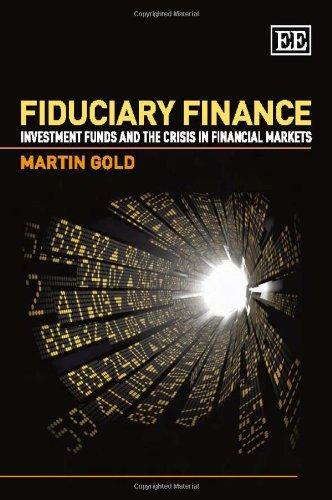Question
In late 1993, the Weyerhauser Corporation was considering the use of a so-called Industrial Development Bond to help finance the construction of a facility in
In late 1993, the Weyerhauser Corporation was considering the use of a so-called Industrial Development Bond to help finance the construction of a facility in the state of North Carolina. Industrial Revenue Bonds (IRBs) and Pollution and Environmental Control Revenue Bonds (PCBs) were financial instruments issued by a state or local government authority in this case, Martin County, North Carolina. The proceeds from these securities would be used to finance the development of facilities or the purchase of equipment that would be managed by a for-profit company, but that would serve a particular local public interest such as providing employment in a depressed region or reducing pollution. Because the bonds were technically issues of state or municipal authorities, interest income on the bonds was exempt from taxation. The issuing government authority was merely a conduit, however. The interest and principal on the debt was effectively repaid by the sponsoring corporations (e.g., Weyerhauser), which was designated in the bonds indenture as the guarantor of the bond and the ultimate source of funds from which the bonds interest and principal would be paid. Although the interest income received by IRB investors was exempt from taxation, the interest expense effectively paid on the IRBs by the corporate entity servicing and guaranteeing the bonds was deductible for tax purposes.
In late 1993, $50 million of IRBs that would be guaranteed and serviced by the Weyerhauser Corporation could have been issued at par with an annual bond-equivalent yield of 5.65% (i.e., interest of $28.25 per $1,000 bond would be paid twice a year). They would mature 30 years later in the year 2023. If Weyerhauser were instead to issue bonds of equivalent maturity and risk as the IRBs but do so as a direct obligation of its own, the interest paid on such debt would not be exempt from taxation to investors. To be sold at par, such fully taxable bonds would have to provide a higher coupon yield in the vicinity of 7.25% (paid semiannually).
Why would Weyerhausers IRBs have a lower effective annual yield than that of its direct obligations of equivalent maturity and risk?
What is the present value of the savings Weyerhauser would realize if it arranged the IRB financing described above instead of a conventional corporate bond with a yield of 7.25%? For simplicity assume that only interest would be paid during the life of the bonds and that all principal would be paid at maturity. Also assume that Weyerhausers marginal corporate tax rate was 35%.
Step by Step Solution
There are 3 Steps involved in it
Step: 1

Get Instant Access to Expert-Tailored Solutions
See step-by-step solutions with expert insights and AI powered tools for academic success
Step: 2

Step: 3

Ace Your Homework with AI
Get the answers you need in no time with our AI-driven, step-by-step assistance
Get Started


